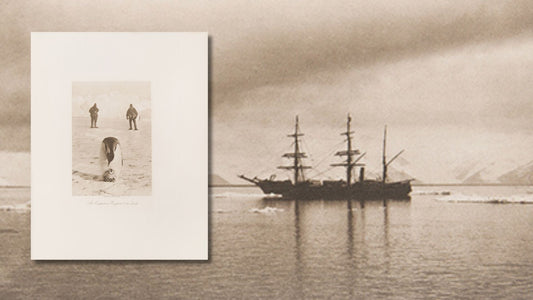Time Travel


What's in a name? The start of a publishing legend
Karl Baedeker founded the famous ‘Baedeker’ house in 1827. He and four generations of Baedekers after him achieved something quite extraordinary by creating a tri-lingual set of travel guides spanning 180 years and covering some forty countries.
Born in Essen in 1801, both Karl Baedeker’s father and grandfather had been booksellers and publishers. In those days it was common practice to engage in both trades at the same time.
The Golden Age of Travel
Mass travel and tourism started to take off in 1827 with the launch of the first passenger steamboat service on the Rhine between Coblence and Mayence, and Karl published his first guidebook in 1832: Rheinreise von Mainz bis Koln. It was successful, and he proceeded to publish a second edition in 1835 and the Baedeker guides were born and continued for the next 180 years.
Ultimate Guidebook for Victorian Tourists
The first English edition appeared in 1861 with the Rhine, followed by Switzerland in 1863 and Paris in 1865. With their distinctive red covers, diligently updated information and state-of-the-art maps, Baedekers grew to become an essential tool for civilised travel everywhere.
Karl Baedeker travelled extensively to collect all the data and information for his travel guides, starting the famous “star” system by marking important sights with an asterisk. In 1859 his enterprising career was cut short by his sudden death. His three sons had followed him into the firm and taken over the booming Baedeker business.
Pre-war success and a small law suit
In 1872 Baedekers moved to Leipzig. The firm continued to enjoy success. The reputation of the handbooks was high, not just for the information but also because the quality of the maps was second to none. The company had a few hiccups along the way, but it always survived.
There was a famous lawsuit in the 1890s brought by Howard ( a hotel owner in Jaffa and Jerusalem) against Baedeker with reference to some disparaging remarks in the Palestine and Syria edition in 1894 about his hotels. Howard won the lawsuit and Baedekers were ordered to remove the critical comments. However in the next edition in 1898 Howard’s hotels were omitted and his business suffered greatly as a result. Baedekers reached their zenith in the decade before World War I and by 1914 were publishing in a total of 78 titles ( 29 in German, 27 in English and 22 in French).
Tourism in Nazi‐occupied Poland
World War II virtually stopped the publication of all guides except for Elsass and the infamous Generalgouvernement in 1943. This handbook covered those parts of occupied Poland that were not annexed by Greater Germany.
The name of the Territory was derived from the old name under Czarist Russia before World War I (‘General Gouvernement of Warsaw’) and used by the Germans after they had captured the region from Russia. The Governor-General Reichsminster Dr Hans Frank, invited Baedekers to publish a regional handbook. The result was a history of Poland as seen through official Nazi-German eyes. Robert Harris used this Baedeker to help him research and write his bestselling Fatherland.
Post-War Editions
In 1943, Baedeker’s premises were hit in an air raid, and practically all were lost including the extensive archives and stocks. The only things that survived were human talent, devotion and the firm’s high reputation. Miraculously the firm managed to resurrect itself after the War, and it published Leipzig in 1948 and promptly ran into trouble with the Russian authorities in Eastern Germany. However, they survived and eventually the firm and its name were bought by MairDumont, which successfully continues to publish the famous Baedeker travel guides to this day.
A Lasting LegacyIn Santa Croce with no Baedeker
Today, many people know of Baedeker through reading or watching the film adaptation of E.M. Forster’s A Room With A View that made entertaining use of the Northern Italy Baedeker.
Collecting Baedekers
With their distinctive red covers, Baedekers are beautiful objects and time capsules to another era, sought after by collectors.
Shapero Rare Books is probably the leading international specialist in antiquarian travel guidebooks. We stock an extensive range from the eighteenth century onwards.
Contact our travel specialist Lucinda Boyle for more information.




